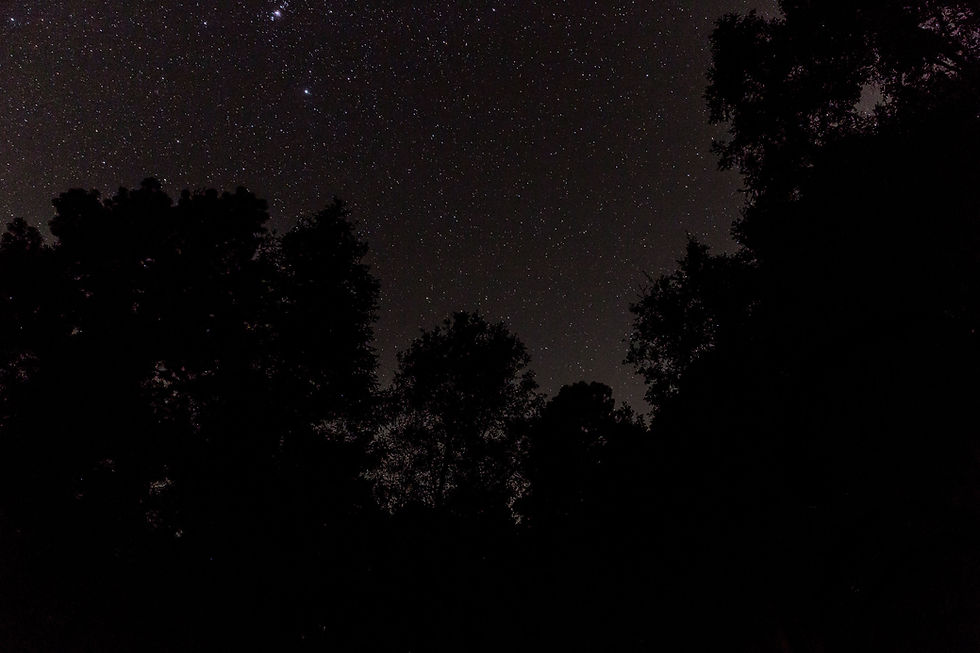top of page

Night as it should be.
夜を夜らしく。
Our ancestors lived in harmony with nature, waking with sunrise and sleeping with sunset.
They used fire as their only source of artificial light and lived under the stars and moon. Artificial lighting has been developed for just over 100 years and today's 'bright night' is a recent, unnatural creation by humans. The amount of artificial lighting has continued to rise, leading to brighter nights. However, our eyes and brain, which evolved in the dark nights over tens of thousands of years, have not yet adapted to the modern bright night. Excessively bright nights have been linked to negative impacts on both physical and mental health. As lighting specialists, our approach is to prioritize the quality of lighting over its quantity. We strive to create environments that are not only environmentally sustainable, but also promote well-being through limiting excessive brightness. By doing so, we showcase the significance of thoughtfully designed lighting in our daily lives.
私たちの祖先は何万年もの間、日の出とと共に起き日の入りとともに休むという、自然とシンクロした生活をしてきました。炎だけが夜間の人工照明として使われ、月明りと満天の星空の下で暮らしてきました。
人工照明が開発されてからまだ100年ちょっと、現代の我々が当たり前だと思っている「明るい夜」は当たり前ではなく、ごくごく最近になって人類が作り出したとても不自然な環境なのです。
過去100年の間に人工照明の量は増え続け、夜はますます明るくなりました。しかしながら何万年も「暗い夜」で進化してきた我々の視覚と脳は現代の「明るい夜」にまだ順応しておらず、明るすぎる夜は心身の健康に悪影響を及ぼすことが近年になって証明されてきました。
過剰な照明はエコでないだけではなく不健康であり、我々は光環境を設計する専門家として、常に夜を明るくしすぎないことを考えています。
光の「量」ではなく「質」を向上させるデザインを提供することで、照明デザインを通じて人々の生活をより良いものにするお手伝いをしたいと思っています。

Light Visualizes Space.
We Shape Vision Through Lighting Design.
空間を光によって視覚化する。
Vision is our primary source of information about the world around us. Through the presence of light, we are able to recognize and understand a space. However, the quality of lighting can significantly impact our experience of the space. Unlike common lighting designs that prioritize horizontal illuminance and focus primarily on functionality, we view lighting design as a way of reconstructing the material space into visual information.
Our lighting designs prioritize the visual environment and use light to enhance and transform a space, reflecting its unique character and materials. We consider how people occupy, navigate, and move through the space, and propose the optimal lighting environment to create a comfortable and beautiful experience.
人類は外界の情報のほとんどを視覚から得ています。
光があることによって空間を認識することが出来ます。
いかに素晴らしい建築や空間であっても光がなければ見ることすらできず、照明の良し悪しによって夜間の空間の体験は劇的に変化します。
我々は、光環境をデザインするということは「物質的な空間を視覚情報に再構成すること」として捉えます。
したがって一般的な「床面照度を重視する設備設計としての照明設計」ではなく、「空間をどう見せるかという光環境デザイン」を行います。
床面をいかに明るく照らすかという「光の量」の設計ではなく、快適で美しい空間を作るために利用者の視線と導線、空間の特徴や素材を考慮して最適な光環境の提案をします。

Our
Design
Approach
Looking Beyond The Space
We aim to take an active role in meaningful projects that contribute to the greater good. At our studio, rather than solely focusing on lighting design solutions for given spaces, we prioritize understanding the broader objectives of each project. By centering on project goals, we tailor our technical solutions to enhance the designated space, ensuring our designs contribute effectively to achieving these goals and creating a better future.
空間の先にある目的の達成のために
私たちは、社会をより良くする意義のあるプロジェクトに積極的に関与したいと考えています。そのため、単に与えられた空間に対する照明デザインの解決策を提供するだけでなく、常にプロジェクトの最終的な目的と意義を理解し、それを達成するために照明デザインがどのように貢献できるかを考えて取り組みます。
Intentional Lighting
We aim to design lighting environments that are carefully crafted with clear intent and purpose for each light, ensuring that every light serves a distinct reason. Often, it's not necessary to uniformly illuminate every corner of a space. It's important to have light where it's needed, creating a comfortable and aesthetically pleasing lighting environment without excessive brightness.
それぞれの光に目的を
すべての光にそれが存在する理由や目的がある、そのよう明確な意図をもってそぎ落とされた光環境のデザインを目指しています。「適光適所」という言葉がありますが、多くの場合、空間全体を均一に隅々まで照らす必要はあり��ません。必要なところに必要な光があり、明るすぎずに快適で美しい光環境を作ることが重要だと考えています。
Lighting as an Integral Part of Space Design
In order to design lighting that is gentle on the eyes and enhances the beauty of a space, lighting must be designed as an integral part of architecture and interior design. A goal of our lighting design is a state where the space is seen and not the lighting fixtures. This can be achieved only by working closely with architects and interior designers.
空間デザインに組み込まれた光
目に優しく快適で、空間を美しく演出することのできる照明を設計するためには、照明が建築やインテリアデザインと一体となって設計される必要があります。照明器具は見えずに空間が見える、という状態を目指して建築家やインテリアデザイナーの方とコラボレーションさせてもらいます。
Glare-Free & Balanced Lighting
The human eye is incredibly sophisticated, capable of adjusting to brightness levels ranging from 0.0001 lux in dark nights to 100,000 lux on bright, sunny days, approximately a range of ten billion. However, the range of brightness that the eye can comfortably view is believed to be only about 1000 times. If the same field of vision has a brightness range that exceeds 1000 times, it can cause glare and make dark areas appear even darker. Brightness perception is relative, not absolute; when there is something too bright, everything else appears dark. This results in a situation where if light is added in one place, other areas appear dark and require more lighting as well. It's important to focus on balance, not quantity, of light. By suppressing glare and designing a well-balanced lighting environment, we can create a comfortable and beautiful lighting environment without excessive lighting.
眩しさのない、美しい光環境
人間の目は驚くほど優れており、健康な目は0.0001ルクスの闇夜から100,000ルクスの晴天の昼間まで約10億倍の明るさの幅に対応しています。しかしながら、同時に目で見ることのできる明るさの幅は1000倍程度だといわれています。同じ視野内に1000倍以上の明るさの幅があると眩しさ(グレア)を感じ、それによって暗い部分が暗すぎると感じます。明るさの感覚は絶対的ではなく相対的なものです。明るすぎるものがあれば他が暗く感じます。したがって一か所に照明を足したら他の場所が暗く感じてしまってそこにもまた照明を足さなければいけない、といったことが起こります。これが原因で「光の過食症」が起こります。大切なのは光の量ではなく、バランスです。眩しさを抑えて、丁寧に光環境をデザインすることで過剰に照明することなく快適で美しい光環境を作ることができます。
bottom of page
